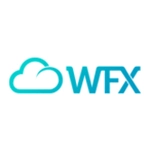How data analytics is revolutionizing the fashion industry?
-
Introduction
Fashion professionals are starting to understand how crucial it is to harness data if you want to improve sales, profit margins and brand image while simultaneously reducing cost, waste and carbon emissions. From collection planning, consumer targeting to demand forecasting and supply chain optimization, data analytics has become essential for developing efficient fashion design and production strategies.
-
What Is Data analytics? What Are Its Different Types?
Data analytics might seem like an elusive topic to understand, but trust me it’s not. It’s simply the process of analyzing raw data and converting it into information that can be used to gain insights, draw conclusions and find trends. Data analytics is the cornerstone of a strategically-guided decision making process.
-
There are 4 types of data analytics approaches:
- Descriptive Analytics: is all about summarizing past data to understand what happened. Analyzing historic data to gain insights and using them to plot the future courses of action. For example, business intelligence reports and dashboards, consumer habits etc.
- Diagnostic Analytics: is all about analyzing historical data to figure out why something happened. In diagnostic analytics we employ techniques such as drill-down, data discovery, data mining and correlations.
- Predictive Analytics: as the name suggests, is about predicting what is likely to happen in the near future. And it’s done by using statistical techniques like modelling, machine learning, data mining, and game theory.
- Prescriptive Analytics: is about making predictions and suggesting appropriate courses of action based on those predictions. Prescriptive Analytics not only predicts future outcomes but goes beyond that by suggesting different actions and business implications of each of those actions.
-
How Can Fashion Businesses Use Data Analytics At Each Production Stage

- DESIGN & IDEATION – Designing a fashion collection involves a significant amount of research and analysis to stay up-to-date with current trends and forecast future ones. In the past, intuition played a big role in deciding which designs to manufacture, but today, data analytics is becoming increasingly important in this process. Fast fashion brands such as Shein, Zara, and Fashion Nova are utilizing methods like collecting data on consumer preferences from social media, analyzing consumer purchase data to identify buying patterns, and trend forecasting to maximize profits and better serve consumer demands. With descriptive and predictive analytics, these brands can make data-backed decisions on what designs to produce and how much to produce, resulting in reduced waste and increased profitability. For example, if data analytics shows that consumers are increasingly interested in sustainable fashion, designers can incorporate eco-friendly materials and practices into their designs to better serve the market demand.
- LINE PLANNING – Line planning is a crucial stage in the fashion industry, and data analytics has proven to be invaluable in this process. By measuring customer reactions to samples, manufacturers can eliminate unpopular designs and ensure that every product attribute, from the color palette to sizes to styles, is carefully examined. With data analytics, manufacturers can avoid lost sales and costly markdowns due to understocking or overstocking their collections. Detailed planning can be done with spreadsheets for a few lines, but it becomes challenging when hundreds of lines are involved. Data analytics makes it easier to create a product mix that will drive the highest value, optimizing the pricing of the product by considering various costs such as materials, profit margins, transportation, and overhead. For example, data analytics can help manufacturers identify which colors and styles are most popular among consumers, allowing them to produce more of these products and increase their chances of selling out.
- SOURCING – Fashion businesses strive to acquire as much data as possible about potential suppliers to find the right ones. However, analyzing multiple data points can be time-consuming and challenging. Data analytics provides a faster and more accurate way to analyze these data points, enabling fashion businesses to make informed decisions about their suppliers. Moreover, sustainability has become a crucial goal for every fashion brand, from Zara to Nike. To become a more sustainable brand, the first step is to use sustainably made and ethically sourced materials. Data analytics can assist in evaluating how well third-party vendors and suppliers adhere to compliance standards with specialized metrics and parameters.
For example, fashion businesses can use data analytics to identify suppliers that meet their sustainability criteria, reducing their environmental impact and improving their brand image.
- PRODUCTION – One of the most effective ways to share production updates with key stakeholders is through data visualization. Providing staff with business intelligence reports and dashboards can reduce lead time and eliminate inefficiencies in the current production process. It also enables supervisors to quickly identify red flags such as dips in productivity, unmet production targets, and equipment downtime, allowing them to address these issues before they become significant problems. Data visualization provides a clear and concise overview of production performance, allowing stakeholders to easily identify areas that require improvement. Moreover, data visualization provides a better understanding of the production process and highlights areas where efficiencies can be improved. For example, it can help identify bottlenecks in the production process, enabling managers to allocate resources effectively and reduce lead time.
- INVENTORY MANAGEMENT – Fashion businesses are utilizing data mining techniques to gain insights that can streamline and improve their inventory management. Data analytics is an essential tool for analyzing inventory data to understand product performance, channel performance, and customer preferences. These insights play a vital role in determining how much inventory is needed to meet demand while keeping stock levels low, optimizing stock management, and reducing product returns. Relying on data to make these decisions helps reduce errors and minimize waste. For example, data analytics can help identify slow-moving inventory, enabling businesses to take corrective actions such as markdowns or promotions to move the inventory.
- QUALITY CONTROL – In the world of fashion, the quality of a product is of paramount importance. Luxury brands, for example, are able to charge high prices due to the impeccable quality of their products. To ensure high quality, fashion brands are turning to prescriptive analytics and artificial intelligence. This allows supervisors to quickly address quality issues before they cause significant production downtime. Quality analytics also provides insights into equipment, defect counts, targets, and other factors that can be used to optimize processes that are falling behind. For example, a fashion brand can use descriptive analytics to detect a quality issue in a batch of garments during production, allowing them to quickly make the necessary adjustments and prevent a potential recall, saving time and money.
-
Conclusion
I hope after reading this article you’re able to better understand why data analytics and its insights play such an important role in fashion today.
If you’re a fashion brand looking to succeed in today’s digital-first ecosystem, it’s crucial to collect and analyze your internal data to improve your bottom line and stay ahead of the competition.
So, whether you’re just starting out or looking to take your business to the next level, don’t overlook the power of data analytics in fashion. Start by taking small steps to gather and analyze your data and use the insights gained to make informed decisions that will drive your business forward. Let data analytics be your secret weapon in the world of fashion with WFX.
Sign up for a FREE DEMO to learn how you can leverage data with WFX!








